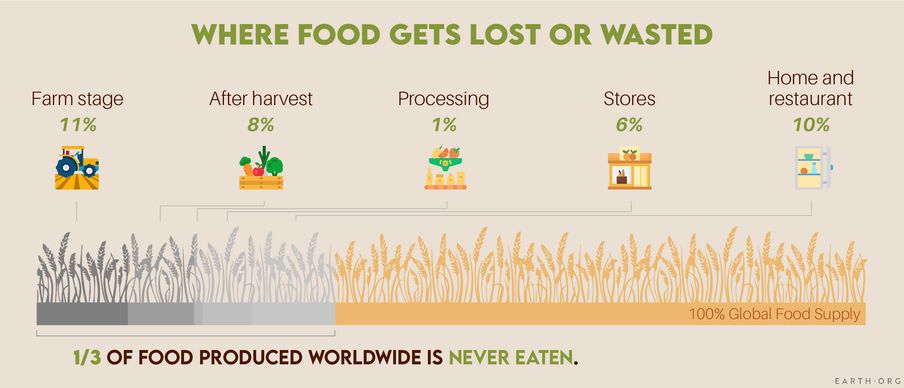World hunger, after nearly two decades of abatement, is back on the rise, now affecting 663 million women, men and children according to the UN Food and Agriculture Organization (FAO). It also announced in 2011 that one-third of global food production is wasted. Here, we give you an overview of the most important, but also recently updated food waste statistics so you can educate yourself and those around you.
—
Food waste has no place in our world. Millions are undernourished in low-income nations while overproduction drops prices in those of high-income, painting an overall nonsensical picture. We need to address this admittedly multi-faceted issue out of responsibility, and the first step in doing so is to understand it.
Its rise to concern was solidified by its inclusion in the Sustainable Development Goals in 2015, setting the target to halve per capita post-retail global food loss by 2030. A good start, but far from enough. A McKinsey report from November this year shows that only half of the lost food happens at or after retail, and that the farming stage is worth paying more attention to.

Till now, farms were somewhat overlooked because of the idea that it was a lower-income country problem, mainly due to poorer harvest and storage technology. The truth is that waste at the farm stage can be driven by the socio-economic and market factors that shape the agricultural system. Farmers need to match demand as best they can, but there are currently no (or very few) systems set up to give them the information. In wealthy nations, they will understandably overproduce rather than the opposite, but this drives down prices and damages the environment.
The WWF’s latest report comes with a timely update on food waste statistics. According to them, farm-stage food waste is actually higher in high-income countries, whose 37% share of the global population contributes 58% of global harvest waste. Further, they report 1.2 billion tonnes of farm-stage food waste per year. This is far more than previously thought and pushes the share of wasted food up to about 40%.
It doesn’t end there. If waste in the face of the millions going hungry wasn’t enough, food waste is also a major contributor to climate change and environmental damage. Farm-stage food waste amounts to 2.2 gigatonnes of CO2eq a year, that is 4% of global anthropogenic emissions, while food waste overall, 6-8%.
It just so happens that food production in general is the biggest driver of land use change, and therefore habitat loss, something we know is bad but not exactly how bad. We urgently need to optimize the system both in terms of production and distribution to curtail the entirely avoidable waste and suffering we have today.
How do we do that?
Governmental bodies need to check their definitions, which so far have left certain stages of food loss out of consideration. Next, pre- and post-retail food waste should be of equal concern, and then new goals should be defined.
The best thing the average person can do is be less picky about the way food looks. Seriously.
Finally, the Internet of Things and artificial intelligence are tools with incredible potential that should help us optimize every stage of the process. This means less and better use of farm resources and better predictions of the type and quantity of demand. However, techno-optimism is risky, so we should do our best to solve the problem as best we can now.
This article was written by Owen Mulhern
You might also like: The Keeling Curve Explained










![The Statistics of Biodiversity Loss [2020 WWF Report]](https://u4d2z7k9.rocketcdn.me/wp-content/uploads/2020/12/lprwinkyTHB-544x306.jpg)





